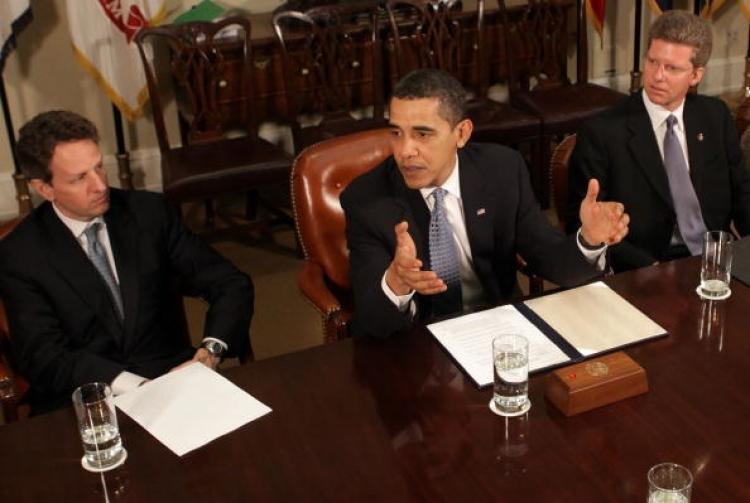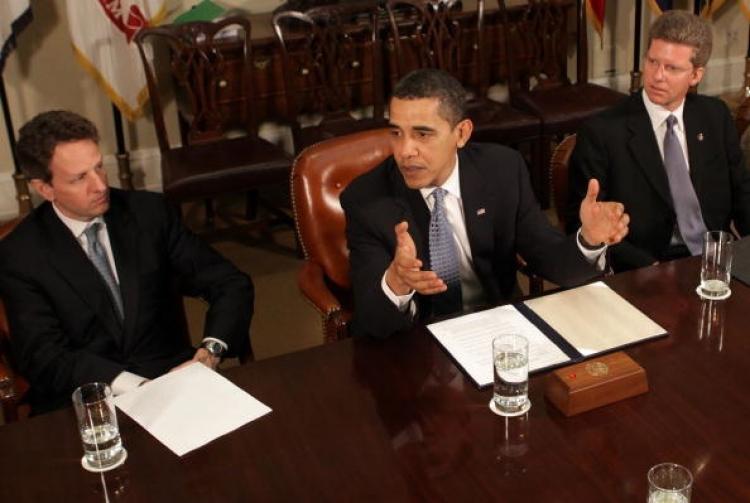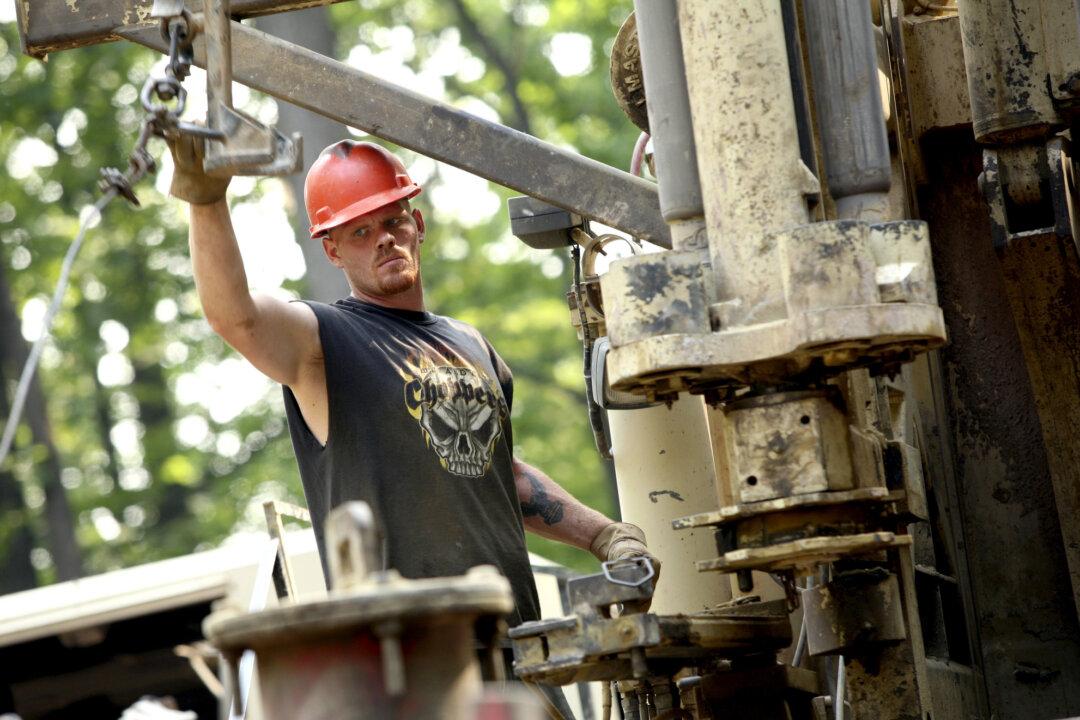NEW YORK—The federal government’s loan modification program, designed by the Obama administration to forestall the skyrocketing number of home foreclosures in the United States, is not effective enough, a report said this week.
The Congressional Oversight Panel, in a 216-page report, said that the Treasury Department is struggling to get the program running and come to the aid of the majority of homeowners in trouble. As a result, the foreclosure crisis has continued unabated, the panel said.
The panel monitors the government’s activities surrounding its financial bailouts and other programs that aim to address the financial crisis.
“It now seems clear that Treasury’s programs, even when they are fully operational, will not reach the overwhelming majority of homeowners in trouble,” the report said.
The program, called Making Homes Affordable, was instituted in March of last year to help homeowners who are either unemployed, with second liens on their homes, or underwater. Mortgages become underwater when the mortgage has a larger balance than the current market value of the home. It is a prevalent problem facing homeowners in several hardest-hit regions such as Florida, Nevada, and Arizona.
According to the panel, the federal program is now on course to assist only around 1 million homeowners facing imminent foreclosure, far fewer than originally thought and intended.
As of March, around 230,000 homeowners in the United States received loan modifications under the program, according to U.S. Treasury data released this week. Currently 781,000 homeowners are in trial modifications, the department said.
“Even among borrowers who receive five-year modifications, some will eventually fall behind on their payments and once again face foreclosure,” the report said. “In the final reckoning, the goal itself seems small in comparison to the magnitude of the problem.”
The program originally hoped to help up to 4 million American borrowers.
The program is not aimed to assist all homeowners in trouble, according to the Treasury, and has strict qualifications—borrowers must be in good standing with their lenders to qualify.
Many homeowners in financial trouble do not qualify as they have already missed many payments. Others not only owe mortgages, but also are piling up debt due to auto loans, credit card debt, and education loans.
Foreclosure data in the first quarter does not bode well for homeowners. U.S. properties subject to foreclosure increased by 16 percent during the first quarter of 2010 compared to last year, and up 7 percent compared to the fourth quarter 2009, according to data from RealtyTrac.
“Lenders are starting to make a dent in the backlog of distressed inventory that has built up over the last year as foreclosure-prevention programs and processing delays slowed down the normal foreclosure timeline,” RealtyTrac CEO James Saccacio said in a statement.
March saw 367,000 real estate properties subject to foreclosure. Nevada is the state with the highest foreclosure rates, at 1 in every 33 homes.
“It’s still going to be a very painful process for millions of Americans, but we’re going to keep working to make sure this program reaches as many people as we can reach,” said Treasury Secretary Timothy F. Geithner on Wednesday.
The Congressional Oversight Panel, in a 216-page report, said that the Treasury Department is struggling to get the program running and come to the aid of the majority of homeowners in trouble. As a result, the foreclosure crisis has continued unabated, the panel said.
The panel monitors the government’s activities surrounding its financial bailouts and other programs that aim to address the financial crisis.
“It now seems clear that Treasury’s programs, even when they are fully operational, will not reach the overwhelming majority of homeowners in trouble,” the report said.
The program, called Making Homes Affordable, was instituted in March of last year to help homeowners who are either unemployed, with second liens on their homes, or underwater. Mortgages become underwater when the mortgage has a larger balance than the current market value of the home. It is a prevalent problem facing homeowners in several hardest-hit regions such as Florida, Nevada, and Arizona.
According to the panel, the federal program is now on course to assist only around 1 million homeowners facing imminent foreclosure, far fewer than originally thought and intended.
As of March, around 230,000 homeowners in the United States received loan modifications under the program, according to U.S. Treasury data released this week. Currently 781,000 homeowners are in trial modifications, the department said.
“Even among borrowers who receive five-year modifications, some will eventually fall behind on their payments and once again face foreclosure,” the report said. “In the final reckoning, the goal itself seems small in comparison to the magnitude of the problem.”
The program originally hoped to help up to 4 million American borrowers.
The program is not aimed to assist all homeowners in trouble, according to the Treasury, and has strict qualifications—borrowers must be in good standing with their lenders to qualify.
Many homeowners in financial trouble do not qualify as they have already missed many payments. Others not only owe mortgages, but also are piling up debt due to auto loans, credit card debt, and education loans.
Foreclosures Up
Foreclosure data in the first quarter does not bode well for homeowners. U.S. properties subject to foreclosure increased by 16 percent during the first quarter of 2010 compared to last year, and up 7 percent compared to the fourth quarter 2009, according to data from RealtyTrac.
“Lenders are starting to make a dent in the backlog of distressed inventory that has built up over the last year as foreclosure-prevention programs and processing delays slowed down the normal foreclosure timeline,” RealtyTrac CEO James Saccacio said in a statement.
March saw 367,000 real estate properties subject to foreclosure. Nevada is the state with the highest foreclosure rates, at 1 in every 33 homes.
“It’s still going to be a very painful process for millions of Americans, but we’re going to keep working to make sure this program reaches as many people as we can reach,” said Treasury Secretary Timothy F. Geithner on Wednesday.





